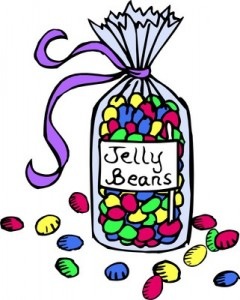Peeps: the blazing yellow and hot pink marshmallow bunnies and chicks that were hatched over 50 years ago. They’re called PEEPS because the original candy was the yellow chick. Now they’re produced for many holidays – in seasonal colors and shapes, of course – and they continue to be the subject of lots of design contests (you’d be amazed what you can make out of peeps) and scientific experiments (some claim them to be indestructible). Just Born, the parent company of PEEPS, claims to produce enough PEEPS in one year to circle the Earth twice.
PEEPS have been the number one non-chocolate Easter candy in the US for more than a decade. Although yellow is America’s favorite color for PEEPS chicks and bunnies, they also come in pink, lavender, blue, orange, green, and other seasonal colors.
What’s In Them?
They’re made of sugar, corn syrup, gelatin, and less than 0.5% of potassium sorbate, natural flavors, dye, and carnauba wax, and they are gluten and nut free. (No wonder some claim that they’re indestructible!) You can even get sugar free PEEPS made with Splenda.
Five little chicks (42g, listed as one serving size) have 140 calories, 0g fat, 1g protein, and 36g carbs.
PEEPS Preferences
Some people like their peeps nice and soft. Others leave them out in the air to age to perfection so they get a little crunchy on the outside. They’ve been microwaved (careful, they expand and can make quite a mess), frozen, roasted, used to top hot chocolate, and added to recipes. They don’t toast well on sticks like regular marshmallows – the sugar coating tends to burn.




